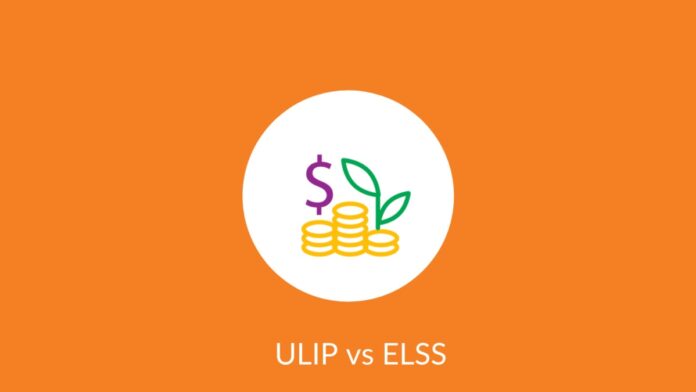Equity Linked Savings Scheme (ELSS) mutual funds and Unit-Linked Insurance Plans (ULIPs) have been popular investment choices among Indians over the years. Apart from their high returns, both instruments allow a tax deduction of up to INR 1.5 lakh under Section 80C of the Income Tax Act, 1961. What gives ULIPs an edge over ELSS is the added benefit of tax-free ULIP plan returns under Section 10 (10D) of the Income Tax Act, 1961. However, Budget 2021 has modified this.
Now, if you purchase a ULIP with over INR 2.5 lakh as a yearly premium, the returns will be taxed as long-term capital gains. This makes ULIPs less attractive for people who invest large amounts in these funds. If you are wondering which avenue is better between ULIP and ELSS with the new tax regime, read on.
What is ULIP?
If you are not sure about what is ULIP policy, consider it a life insurance plan that offers the facility to invest in the funds of your choice. ULIPs offer you a life cover with the opportunity to create a substantial fortune. With ULIPs, you can invest your money in equity, debt, or a mixture of multiple funds as per your risk appetite and monetary goals.
What is ELSS?
ELSS is an investment avenue that puts your capital in equity and equity-based instruments. Even though ELSS has a three-year lock-in period, Section 80C’s tax benefit makes it a lucrative investment option. However, any income earned above INR 1 lakh from ELSS in a financial year is taxable at a 10% rate.
Here, we have compared ULIP and ELSS on various aspects, such as:
- Tax exemptions
When it comes to tax benefits, ULIPs score over ELSS. Both the investment options allow you a deduction of up to INR 1.5 lakhs under Section 80C. You can get this advantage from ULIPs only if the yearly premium does not exceed 10% of the total sum assured. Hence, if you invest INR 2 lakh as the annual premium for the plan, the policy benefit has to be less than or up to INR 20 lakh.
However, ULIP still offers better tax benefits compared to ELSS under Section 10 (10D). When it comes to ELSS, you have to pay a 10% tax if the long-term capital gain crosses INR 1 lakh in a year, irrespective of your investment value. ULIPs do not require you to pay this tax if your yearly premium is not more than INR 2.5 lakh, making it an attractive tax-saving option. ULIP’s death benefit is also tax-free, ensuring that your nominees can use the entire sum assured to achieve their financial goals.
- Switching
Using a ULIP calculator can give you an initial idea about how much return you can expect from the plan. However, ULIPs offer you control by letting you transfer your investments from one fund to another, which is a unique feature missing in ELSS. Fund-switching is the facility to reallocate your money among equity and debt funds. This way, you can manage your investment depending on how much risk you are willing to take and the financial market’s condition.
For example, if the market suddenly becomes volatile, you can significantly lower the risk by shifting your money to a debt fund. Conversely, you can move the capital to equity funds when the market performs well. Additionally, fund-switching does not attract any tax.
- Returns
The ELSS and ULIP plan returns both depend on the market’s performance. This is why long-term gains from both investment instruments may vary depending on multiple factors. However, ULIPs offer a life cover, which gives them an added benefit over ELSS.
If you now believe that a ULIP is a better tax-saving investment option for you, the next step is to find a suitable policy. You can visit your preferred insurer’s website, compare the available plans using a ULIP calculator, and purchase the one that meets your expectations.
























































